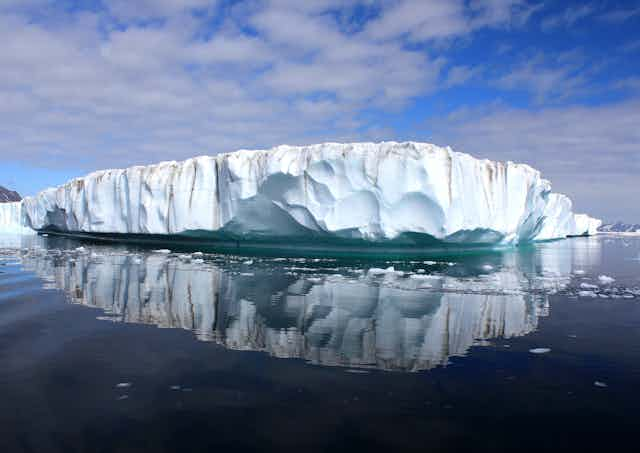Much has been written about the challenge of achieving the targets set out in the Paris climate agreement, which calls for global warming to be held well below 2°C and ideally within 1.5°C of pre-industrial temperatures.
That’s the headline goal, but the Paris agreement also calls for a strong focus on climate science as well as on curbing greenhouse emissions. Article 7.7c of the agreement specifically calls for:
Strengthening scientific knowledge on climate, including research, systematic observation of the climate system and early warning systems, in a manner that informs climate services and supports decision-making.
The next paragraph also calls on countries to help poorer nations, which have less scientific capability, to do the same.
But what are the many elements of climate science that need strengthening to achieve the aims of the Paris agreement? Here are six questions that need answers.
What do the targets mean?
What do the 2°C and 1.5°C targets imply for our climate and adaptation responses? Even warming of 2°C will have significant impacts for humans and natural systems, albeit much less than would occur if we allowed warming to continue unchecked. Still, climate science needs to clarify what is gained by meeting the 1.5°C and 2°C targets, and the consequences of missing them.
Are we on track?
It will be essential to monitor the climate system over the coming years and decades to see whether our efforts at curbing warming are delivering the expected benefits, or if more measures are needed.
The path to these ambitious temperature targets will not be smooth – there will be periods of rapid warming interspersed with periods of slower warming. We will not meet the targets if the world relaxes on mitigation efforts because of a short-term slowing in the rate of warming as a result of natural variability, such as we saw between 1998 and 2013.
Greenhouse gas concentrations, global temperatures, rainfall and water balance changes, extreme weather events, ocean heat content, sea level and terrestrial and marine carbon sinks are all vitally important elements to track. A focus on surface temperature alone is not sufficient.
What are the tipping points in the climate system?
Tipping points are thresholds beyond which there will be large, rapid and possibly irreversible changes in the climate system. The Greenland and Antarctic ice sheets are one example – beyond a certain level, warming will cause large and irreversible loss of ice, and sea level rise of many metres over the ensuing centuries. Thresholds also exist for ecosystems, such as the Great Barrier Reef, and the services they provide, including food production and water supply.
We need to know what these thresholds are, the consequences of crossing them, and how much and how fast we will have to reduce emissions in order to avoid this.
How will climate and extreme events change?
Many places already experience weather extremes such as heatwaves, droughts, fire, floods, storm surges and cyclones, all with damaging consequences. Many of the negative impacts of climate change will occur through changes in the magnitude, duration and frequency of these extreme events.
To adapt to these changes and manage the risks, more detailed information is needed on local and regional scales. It is important to recognise that 2°C of globally averaged warming does not imply 2°C everywhere (many regions, particularly on land, will have larger temperature rises). Extremes may increase faster than averages.
We also need to understand the short-term (decades) and long-term (centuries) implications of choices made today.
What are the appropriate adaptation pathways?
Even if the Paris targets are achieved, some adaptation will be essential. So how do we reduce vulnerability, minimise costs and maximise opportunities? Given the changes already observed with the roughly 1°C of global warming so far, it’s fair to say that more severe impacts will occur during this century.
Keeping warming within 2°C and moving to a lower-carbon world presents many challenges. Considerable work will be needed to help identify climate-resilient pathways and allow humans to adapt to the changes.
Successful adaptation will require an ability to foresee and prepare for inevitable changes in the likelihoods of extreme climate events from year to year. Development of climate forecasts on timescales of a year to decades may provide opportunities to reduce losses in critical sectors such as water, agriculture, infrastructure, tourism, fisheries, energy and natural resources.
Can we take greenhouse gases back out of the atmosphere?
Most scenarios for future emissions that keep warming below the agreed Paris target require not just a reduction in emissions, but also the ability to reduce greenhouse gas concentrations in the atmosphere – so-called “negative emissions”.
One proposed method of partially meeting our energy needs and reducing CO₂ concentrations is called BioEnergy Carbon Capture and Storage. It would involve growing biofuels for energy, then capturing and burying the carbon dioxide released by these fuels. While potentially important, its large-scale deployment poses important questions regarding its costs and benefits and how the large amount of agricultural land required would compete with food production to feed the world’s growing population.
To keep climate change below 2°C, some have proposed a need for more radical geoengineering options if emissions are not phased out quickly enough. These include schemes to cool the Earth by reducing solar radiation. But these proposals fail to address other knock-on issues of carbon dioxide emissions, such as ocean acidification. They also pose large risks, are beset with ethical issues and beg the question of who is going to take responsibility for such schemes.
The Paris agreement proves that the world’s nations know we need strong climate action. But society faces tough choices as we seek to find economically, socially and environmentally feasible ways to meet the targets. Informed decisions will depend on robust science at both local and global scales, which means that far from being done, climate science is now more important than ever.

